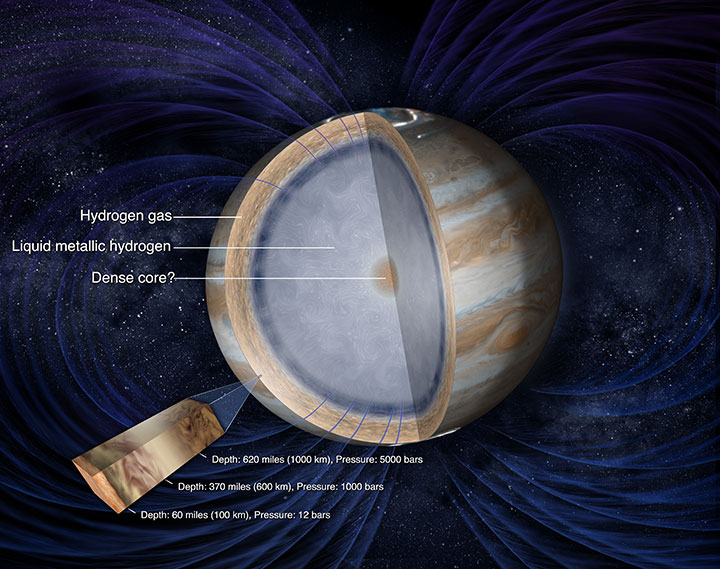Excitement was building Monday as NASA — as well as both professional and amateur astronomers — anxiously awaited the arrival of Juno, the first spacecraft to orbit Jupiter since Galileo came to an end in 2003.

Overall, Juno’s mission is to better understand the evolution of Jupiter, a planet so large that more than 1,300 Earths could fit inside it. Jupiter, and its collection of more than 60 moons, has presented planetary scientists and astronomers with many mysteries yet to be uncovered.
WATCH LIVE: Juno mission to Jupiter
READ MORE: WATCH: Hubble captures brilliant aurora on Jupiter as Juno spacecraft nears
Scientists hope to explore Jupiter’s atmosphere in an effort to ascertain how much water it contains. This, in turn, will help planetary scientists to determine if theories on planet formation are correct.
Our solar system was created from a swirling cloud of dust and gases. When Jupiter — a giant gas planet — formed, it held on to much of that primordial material, acting like a giant history book. Juno will measure not only the water but other elements such as ammonia contained in the atmosphere, which will lead to a better understanding of our early solar system formation.
Then there is Jupiter’s rich and interesting cloud system, something that it is well known for, most notably, the largest and longest-lasting storm known in our solar system, the Great Red Spot.
Like the sun, different parts of Jupiter rotate at different speeds, depending on the latitude. This churns up gases and produces the colourful bands of clouds we see today. Juno will study their composition, temperature and motions and will also measure the clouds to unprecedented depths.
One of the most interesting things about Jupiter is its powerful magnetic field. It is the strongest of any other planet in our solar system.

Here on Earth, our magnetic field is created by a combination of a liquid layer of iron, nickel and other metals around our inner solid core where the flow of liquid iron becomes electrically charged.
READ MORE: Juno’s mission to Jupiter: 7 weird and wonderful facts about this giant planet
When it comes to Jupiter, scientists believe that the powerful magnetic field is created as hydrogen is squeezed into metallic hydrogen where it acts like an electrically conducting metal.
Jupiter’s intense magnetic field allows for bright, strong aurorae at its poles, just like our northern and southern lights here.
Juno will sample some the charged particles and magnetic fields near Jupiter’s poles while also observing the aurorae.
Scientists hope that studying this relationship will help better understand magnetic fields as well as aurorae.
Measuring the magnetic field will also help scientists determine if Jupiter has a solid core, something that remains unknown.
- Invasive strep: ‘Don’t wait’ to seek care, N.S. woman warns on long road to recovery
- Ontario First Nation declares state of emergency amid skyrocketing benzene levels
- Do Canadians have an appetite for electric vehicles? Experts are divided
- Nearly 200 fossil fuel, chemical lobbyists to join plastic treaty talks in Ottawa









Comments